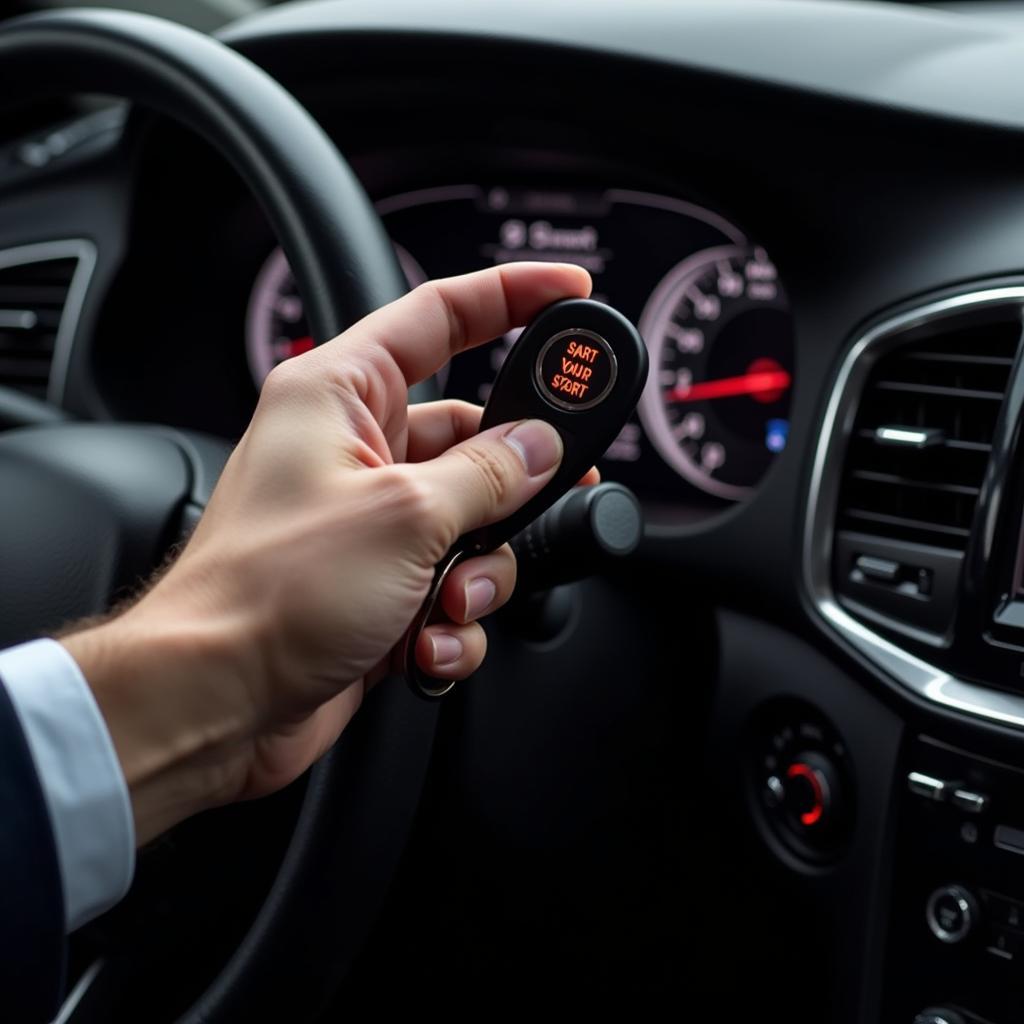A car battery alert can be a jarring experience, leaving you stranded or unsure of what to do next. Whether it’s a flashing light, a cryptic message on your dashboard, or a slow engine crank, understanding what that battery alert means is crucial for addressing the problem effectively. This article will guide you through the common causes of battery alerts, offer solutions to get you back on the road, and provide preventive measures to avoid future issues.
Understanding Different Types of Battery Alerts
Battery alerts aren’t always the same. Some cars have dedicated battery warning lights, while others might display a more general warning message. Understanding these variations is the first step in diagnosing the issue. A red battery icon usually indicates a problem with the charging system, while a dimming of lights or sluggish electrical systems can point to a weakening battery. Sometimes, the issue isn’t the battery itself, but rather a component related to the charging system, like the alternator or voltage regulator.
What Does a Battery Alert Mean?
A battery alert typically signifies that the car’s electrical system is experiencing an issue related to the battery or its charging process. This could mean the battery isn’t holding a charge, the alternator isn’t charging the battery correctly, or there’s an excessive electrical drain somewhere in the system. If you’ve recently replaced your battery and the check engine light is on, be sure to check out our guide on replaced battery check engine light is on.
Common Causes of a Battery Alert Car
From loose connections to faulty components, a variety of factors can trigger a battery alert car. One of the most common culprits is a failing alternator. The alternator is responsible for recharging the battery while the engine is running. If it malfunctions, the battery won’t receive the necessary charge, leading to a battery alert. Another frequent cause is corrosion on the battery terminals. This corrosion can disrupt the flow of electricity, triggering the alert. Extreme temperatures can also affect battery performance, leading to alerts in both hot and cold weather. Leaving interior lights on or using other electrical accessories with the engine off can also drain the battery and trigger an alert. For issues related to your car’s starting system, you might find our article on flat battery starter helpful.
 Corroded Car Battery Terminals
Corroded Car Battery Terminals
How to Troubleshoot a Battery Alert
Troubleshooting a battery alert involves a systematic approach to identify the root cause. Start by visually inspecting the battery terminals for corrosion. If present, clean them with a wire brush and baking soda solution. Next, check the battery’s voltage using a multimeter. A healthy battery should read around 12.6 volts when the engine is off. If the voltage is significantly lower, it could indicate a failing battery. If you’re dealing with issues related to your car’s infotainment system, you might find our article on radio overrides bluetooth car useful.
“A thorough visual inspection is often the first and most crucial step in diagnosing a battery alert,” says John Miller, a seasoned automotive electrical systems engineer. “It can quickly reveal obvious issues like loose connections or corrosion.”
Preventing Battery Alerts in Your Car
Maintaining a healthy car battery goes a long way in preventing unexpected alerts. Regularly cleaning the battery terminals can prevent corrosion-related issues. Ensuring all lights and accessories are turned off before exiting the vehicle can prevent battery drain. Having your battery and charging system tested periodically by a qualified mechanic can identify potential problems before they escalate into alerts. Consider investing in a battery maintainer, especially if you live in a region with extreme temperatures or if your car sits idle for extended periods. If you’re experiencing issues with your car’s safety systems, our article on car seat belt warning might provide some insights.
Key Fob Battery Replacement: A Simple Fix
Sometimes, a “battery alert” might refer to your key fob battery. Replacing the key fob battery is usually a simple process and can often be done without professional help. For specific instructions, consider checking our guide on hyundai sonata key fob battery as an example of the process.
“Regular maintenance is key to a healthy battery,” adds Sarah Chen, an automotive technician with over 15 years of experience. “A simple battery test can save you from unexpected breakdowns and costly repairs.”
Conclusion
A battery alert car is a warning sign that shouldn’t be ignored. Understanding the causes, implementing the right solutions, and practicing preventive measures can save you time, money, and the frustration of a dead battery. By taking proactive steps and being aware of the potential issues, you can keep your car running smoothly and avoid unexpected interruptions on the road.
FAQ
- What does a flashing battery light mean? This usually indicates a problem with the charging system, often the alternator.
- How long does a car battery last? Typically, car batteries last between 3 and 5 years.
- Can I jump-start my car with a battery alert? Yes, but it’s essential to address the underlying issue.
- How can I test my car battery at home? Use a multimeter to check the voltage.
- What causes a car battery to drain quickly? Several factors, including faulty alternator, parasitic drain, or leaving lights on.
- Is it safe to drive with a battery alert? It’s advisable to get it checked as soon as possible.
- How much does it cost to replace a car battery? The cost varies depending on the type of battery and the vehicle.


